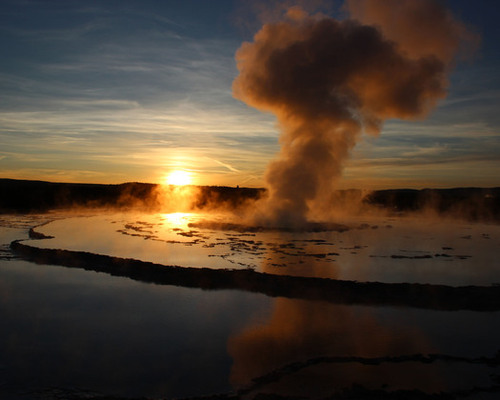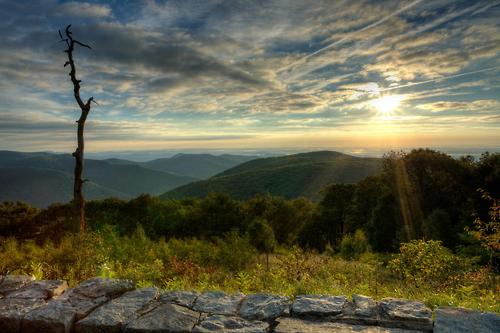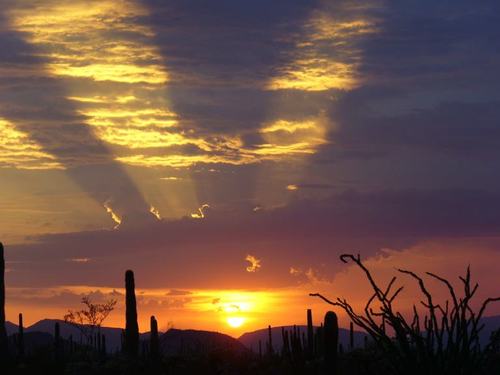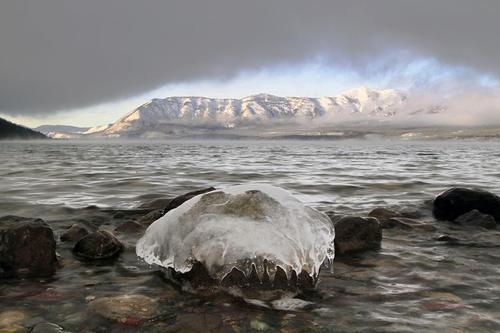The Great Fountain Geyser in Yellowstone National Park at Sunset.
Photo: Sean Balke
A photograph taken at Thorofare Mountain Overlook on September 9, 2012 in Shenandoah National Park. The dead tree in the foreground was one of the most beloved subjects in the park because of the great composition that it set up: a compliment of old life and new sunrises. This was the last picture that we captured of this iconic tree before it fell over. It’s amazing how much of a connection you can feel towards something that would be quickly overlooked in a different setting.
Photo: National Park Service
Some images are just plain extraordinary — and often, the photographer has invested a great deal of time and effort to make that image happen. Photographer Dave Morrow describes the process of making this image from Mount Rainier National Park in early October 2012:
“I went up to Sunrise Point at Mt. Rainier last weekend with my buddy Keith. After a lame sunset, we waited for the Milky Way to come out. The placement was just perfect & the sky was pitch black! Time to jack up the ISO and shoot some stars… This was one of many from the night:)”
Visit Rainier on a beautiful day, and you’ll get a great photograph. Stick around for the sunset, and you’ll often get an exceptional photograph. Wait till the chill of October sets in on a clear night, and stand around fiddling with your camera for a few hours in the dark… and the results just might be extraordinary.
Photo by Dave Morrow - www.DaveMorrowPhotography.com
Mysteries of Sonoran Desert life are slowly revealed and abundantly displayed at Organ Pipe Cactus National Monument. This International Biosphere Reserve, is an ecorich collection of plants and animals that have adapted to living throughout this surprisingly diverse geological landscape. Scenic drives, wilderness hikes and camping can lead to unravelling the mysteries that await your discovery.
Photo: National Park Service
Sometimes there are no words to describe the view in our national parks. This photo from Arches National Park is no exception.
Photo: Jacob W. Frank
Lake McDonald in Glacier National Park hasn’t frozen over this winter, but this rock is giving it a good try.
Photo: T. McCracken, National Park Service
Sure, we would start here http://www.doi.gov/whoweare/interior.cfm. Lots of good information to go through. Good luck with the report!
We get them mostly from the individual parks, wildlife refuges and BLM lands. The Digital Team at the Department of the Interior then selects the photos that are posted on Tumblr. If you’re interested in submitting some photos, you can email them to newmedia@ios.doi.gov. Thanks for your interest!
You can send them to newmedia@ios.doi.gov and indicate in the email that you give the U.S. Department of the Interior permission to post them on our social media channels (Tumblr, Instagram, Facebook, Twitter). We can’t promise all photos we receive will be used, but we’ll definitely take a look!







 Privacy
Privacy